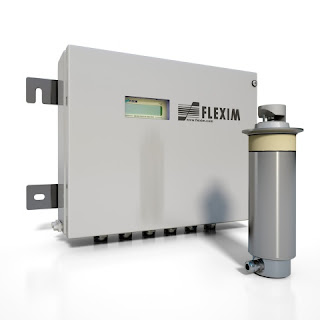 |
| Condensation can have a negative impact in plants, buildings and other and facilities |
What is condensation? In general usage, the term refers to the formation of liquid water droplets that occurs when humid air contacts a cooler surface. It is the liquid moisture that accumulates on the exterior of a glass containing a cold drink. Properly, the term condensation names the process of a vapor changing to a liquid. It is the opposite of evaporation. Condensate (note the different word form) is the liquid accumulated through the condensation process. This article is limited to condensate that forms when atmospheric air contacts a cold surface, so the general usage term condensation will be used.
Where can it happen? Water vapor is contained in air when it has sufficient energy to remain in the vaporous state. Remove some of that heat energy and a calculable quantity of the water vapor will no longer be supported, condensing into liquid water. The temperature at which any given quantity of air will start to shed some of its water vapor content is primarily determined by the concentration of water vapor in the air. A higher water vapor content will result in a higher temperature at which the water vapor will begin to condense. In everyday terms, higher relative humidity leads to a higher temperature at which condensation takes place.
What is the range of impact? Condensation appears to us as water that almost magically manifests on a surface. It seems to come right out of thin air.....because that is where it came from. It can form locally or broadly throughout an area. The potential impact of condensation arises from the fact that it is liquid water. Anything that will be damaged by water will be adversely impacted by condensate formation on its surface. This includes rust and corrosion of metals, spotting on material or object surfaces, the promotion of mold and mildew, and a wide range of other undesirable effects. Accumulated condensate on overhead objects or surfaces can eventually drip onto equipment, materials, and work areas situated below. Puddles of water on a floor can also create a hazard.
Prevention is the best, maybe the only cure.
How to prevent condensate formation?
- Ventilation - If there is a source of moisture in a space that is elevating the humidity, continually diluting the space moisture content by introducing fresh air with a lower moisture content may be an effective prevention method. Ventilation relies on the fresh air conditions always being sufficient for moisture reduction without creating some other adverse impact on the space. For example, ventilating with outdoor air may be effective throughout only part of the year. Without a reliable source of ventilation air with known conditions, this method may not always deliver the desired results. Ventilation is an active method that requires energy to move the ventilation air. Additional energy may be required to adjust the temperature or moisture conditions of the ventilation air, as well.
- Insulation - The surfaces where condensation occurs can be isolated from the moist air by insulating materials. This is common with HVAC ductwork and process piping. If done properly, this method is effective. The goal is to create a new surface that does not exhibit the cooler temperatures of the isolated surface. The thickness and reduced thermal conductivity of the insulation material will achieve this. There is also a vapor barrier on the exterior of the insulation that prevents entry of moisture laden air into the insulation material. It is important the the vapor barrier installed as part of the insulating process remain intact and undamaged. Otherwise, water vapor will enter the insulating material and condense, with the potential for a localized failure of the insulating scheme. Insulation is a passive measure that requires no added energy to remain effective.
- Dehumidification - Outright reduction of moisture contained in the air of an enclosed space will reduce the temperature at which water vapor condenses. Dehumidification machinery is available in a wide range of sizes and performance levels to suit almost any scenario. Though it requires energy to operate, the machinery is generally simple and operates automatically to maintain a space condition that will not support condensation.
- Heating - Some cases can be most effectively treated using the application of a small amount of heat to the surface where condensation forms. This active method can be very effective when the need is localized. Also, surface heaters can be fabricated that will fit where insulation will not, and the heating assemblies may be more resistant to impact and damage than insulating materials. Proper control of heating equipment will minimize energy consumption.
Reach out to product application specialists and share your challenges and concerns. Combining your own facilities and process knowledge with their product application expertise will result in effective solutions.





